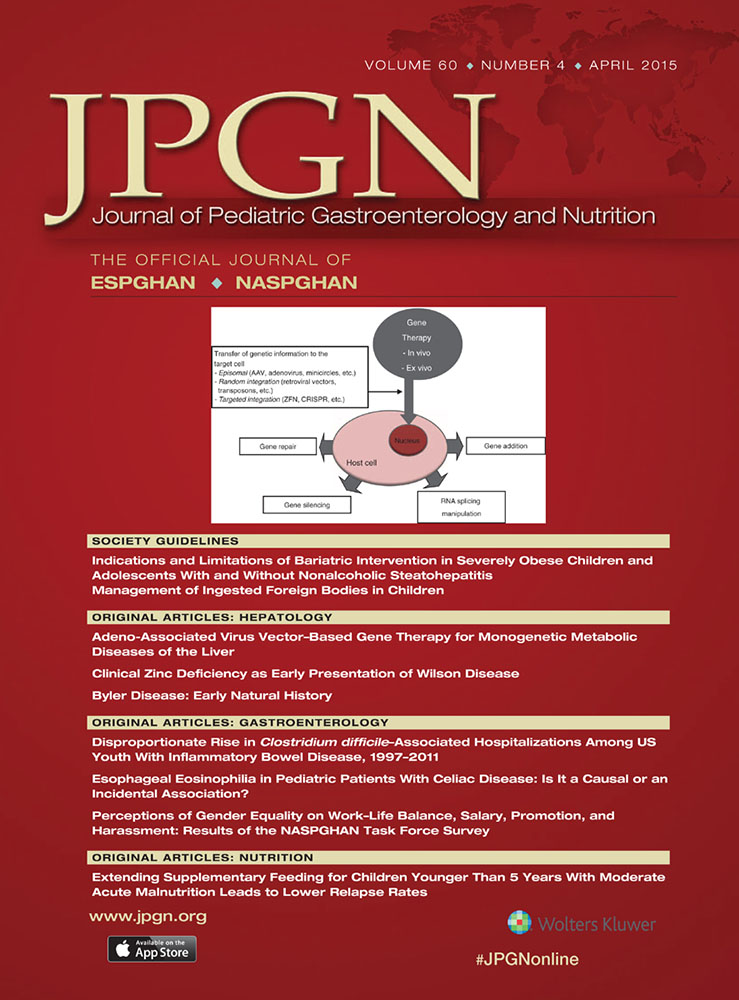Intestinal Inflammation and Impact on Growth in Children With Cystic Fibrosis
This article has been developed as a Journal CME Activity by NASPGHAN. Visit: http://www.naspghan.org/content/59/en/Continuing-Medical-Education-CME to view instructions, documentation, and the complete necessary steps to receive CME credit for reading this article.
This study was supported by The Australian Cystic Fibrosis Research Trust, The Royal Australasian College of Physicians Foundation (Servier Staff Research Fellowship), and The Sydney Children's Hospital Foundation.
The authors report no conflicts of interest.
ABSTRACT
Objective:
The aim of the study was to evaluate and compare faecal markers of intestinal inflammation in children with cystic fibrosis (CF), and determine whether intestinal inflammation adversely affects the nutritional phenotype.
Methods:
Faecal samples for markers of intestinal inflammation, calprotectin, S100A12, and osteoprotegerin, were collected from children with CF, healthy controls (HCs), and Crohn disease (CD). Associations between inflammatory markers and clinical and nutritional indices were determined in subjects with CF.
Results:
Twenty-eight children with CF (mean [standard deviation (SD)] 8.4 [3.3] years old, 22 pancreatic insufficient [PI]), 47 HC, and 30 CD were recruited. Mean (SD) faecal calprotectin in CF (94.3 [100.6] mg/kg) was greater than HC (26.7 [15.4] mg/kg, P < 0.0001), but lower than CD (2133 [2781] mg/kg, P = 0.0003). Abnormal faecal calprotectin was found in subjects only with PI (17/22 (77%), P = 0.001). There was no difference in faecal mean (SD) S100A12 (0.8 [0.9] vs 1.5 [2.2] mg/kg, P = 0.14) and osteoprotegerin concentrations (72.7 [52.2] vs 62.5 [0.0] pg/mL, P = 0.2) between CF and HC. Patients with CD had significantly elevated S100A12 and osteoprotegerin compared with CF and HC. Faecal calprotectin inversely correlated with both weight (r = −0.5, P = 0.003) and height z scores (r = −0.6, P = 0.002) in CF.
Conclusions:
The pattern of intestinal inflammation in CF is unique and distinct from inflammatory bowel disease, with elevated faecal calprotectin but normal faecal S100A12 and osteoprotegerin concentrations. The severity of intestinal inflammation, based on faecal calprotectin, significantly correlates with poor growth.




